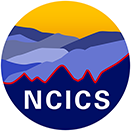
Yuhan (Douglas) Rao
Phone: +1 828.271.4903
Email: yrao5@ncsu.edu
 Orcid: https://orcid.org/0000-0001-6850-3403
Orcid: https://orcid.org/0000-0001-6850-3403
Biography
Dr. Rao is a founding member of NOAA Center for Artificial Intelligence (NCAI). In support of NCAI, he co-leads the development of data standards and guidelines on AI-ready data for Earth and space science data and workforce development efforts for NOAA. Additionally, Dr. Rao co-chairs the annual NOAA AI Workshop that convenes NOAA researchers and partners to advance collaboration around AI research and development in environmental sciences.
Dr. Rao is actively engaged in national and international communities in Earth system science and open science, including Earth Science Information Partners, the American Geophysical Union, and World Climate Research Programme. He is currently the co-chair of the Working Group on Observations for Researching Climate, a working group within the World Climate Research Programme’s Earth System Modeling and Observations core project.
Dr. Rao received his doctoral degree in Geographical Sciences from University of Maryland, College Park, in 2019. His dissertation focused on using machine learning and satellite observations to reduce the uncertainty of regional near-surface air temperature datasets. Dr. Rao received both his Bachelor’s degree in statistics and Master’s degree in cartography and remote sensing from Beijing Normal University. He worked for the GOES-R algorithm working group as a research assistant at the Cooperative Institute for Climate and Satellites–Maryland at UMD, where he supported the validation of the GOES-R ABI land surface temperature product using both station measurements and other satellite products. During his PhD program, Douglas was also an instructor for GIS and spatial statistics courses at UMD.
Publications
Augustin, J., M. Gopinath, B. Karali, and Y. Rao, 2025: Joint prediction of U.S. rice yields and methane emissions: A machine learning approach. IEEE Access, 13, 70018-70043. https://doi.org/10.1109/ACCESS.2025.3562397
Sewell, K., S. Paul, K. De Polt, M.M. Sugg, R.D. Leeper, D. Rao, and J.D. Runkle, 2024: Impacts of compounding drought and heatwave events on child mental health: Insights from a spatial clustering analysis. Discover Mental Health, 4 (1), 1. https://doi.org/10.1007/s44192-023-00055-0
Sun, Z., T. ten Brink, W. Carande, G. Koren, N. Cristea, C. Jorgenson, B. Janga, G.P. Asamani, S. Achan, M. Mahoney, Q. Huang, A. Mehrabian, T. Munasinghe, Z. Liu, A. Margolis, P. Webley, B. Gong, Y. Rao, A. Burgess, A. Huang, L. Sandoval, B.R. Pagán, and S. Duzgun, 2024: Towards practical artificial intelligence in Earth sciences. Computational Geosciences, 28 (6), 1305-1329. https://doi.org/10.1007/s10596-024-10317-7
Becker, P., D. Byrnes, C. Hall, and Y. Rao, 2023: Boosting support for students and early-career professionals. Eos. https://doi.org/10.1029/2023EO230294
Hanson, B., S. Stall, J. Cutcher-Gershenfeld, K. Vrouwenvelder, C. Wirz, Y. Rao, and G. Peng, 2023: Garbage in, garbage out: mitigating risks and maximizing benefits of AI in research. Nature, 623, 28–31. www.nature.com/articles/d41586-023-03316-8
McGovern, A., D.J. Gagne, C.D. Wirz, I. Ebert-Uphoff, A. Bostrom, Y. Rao, A. Schumacher, M. Flora, R. Chase, A. Mamalakis, M. McGraw, R. Lagerquist, R.J. Redmon, and T. Peterson, 2023: Trustworthy artificial intelligence for environmental sciences: An innovative approach for summer school. Bulletin of the American Meteorological Society, 104 (6), E1222-E1231. https://doi.org/10.1175/BAMS-D-22-0225.1
Rao, Y., R. Redmon, K. Dale, S.E. Haupt, A. Hopkinson, A. Bostrom, S. Boukabara, T. Geenen, D.M. Hall, B.D. Smith, D. Niyogi, V. Ramaswamy, and E.A. Kihn, 2023: Developing digital twins for Earth systems: Purpose, requisites, and benefits. arXiv. https://doi.org/10.48550/arXiv.2306.11175
Stall, S., G. Cervone, C. Coward, J. Cutcher-Gershenfeld, T.J. Donaldson, C. Erdmann, R.B. Hanson, J. Holm, J.L. King, L. Lyon, D.P. MacNamara, A. McGovern, R. McGranaghan, A.A. Narock, M.S. Parker, G. Peng, Y. Rao, E. Ryan, B. Sedora, S. Shekhar, K. Vrouwenvelder, L.A. Waller, and C.D. Wirz, 2023: Ethical and responsible use of AI/ML in the Earth, space, and environmental sciences. ESS Open Archive. https://doi.org/10.22541/essoar.168132856.66485758/v1
Wertis, L., M.M. Sugg, J.D. Runkle, and D. Rao, 2023: Socio-environmental determinants of mental and behavioral disorders in youth: A machine learning approach. Geohealth, 7 (9), e2023GH000839. https://doi.org/10.1029/2023gh000839
Dong, Q., X. Chen, J. Chen, D. Yin, C. Zhang, F. Xu, Y. Rao, M. Shen, Y. Chen, and A. Stein, 2022: Bias of area counted from sub-pixel map: Origin and correction. Science of Remote Sensing, 6, 100069. http://dx.doi.org/https://doi.org/10.1016/j.srs.2022.100069
Hills, D.J., J.E. Damerow, B. Ahmmed, N. Catolico, S. Chakraborty, C.M. Coward, R. Crystal-Ornelas, W.D. Duncan, L.N. Goparaju, C. Lin, Z. Liu, M.K. Mudunuru, Y. Rao, R.J. Rovetto, Z. Sun, B.P. Whitehead, L. Wyborn, and T. Yao, 2022: Earth and Space Science Informatics Perspectives on Integrated, Coordinated, Open, Networked (ICON) Science. Earth and Space Science, e2021EA002108. http://dx.doi.org/10.1029/2021EA002108
Jain, S., J. Mindlin, G. Koren, C. Gulizia, C. Steadman, G.S. Langendijk, M. Osman, M.A. Abid, Y. Rao, and V. Rabanal, 2022: Are We at Risk of Losing the Current Generation of Climate Researchers to Data Science? AGU Advances, 3 (4), e2022AV000676. http://dx.doi.org/https://doi.org/10.1029/2022AV000676
Jiang, N., M. Shen, P. Ciais, M. Campioli, J. Peñuelas, C. Körner, R. Cao, S. Piao, L. Liu, S. Wang, E. Liang, N. Delpierre, K. Soudani, Y. Rao, L. Montagnani, L. Hörtnagl, E. Paul-Limoges, R. Myneni, G. Wohlfahrt, Y. Fu, L. Šigut, A. Varlagin, J. Chen, Y. Tang, and W. Zhao, 2022: Warming does not delay the start of autumnal leaf coloration but slows its progress rate. Global Ecology and Biogeography, 31 (11), 2297–2313. http://dx.doi.org/https://doi.org/10.1111/geb.13581
Watson-Parris, D., Y. Rao, D. Olivié, Ø. Seland, P. Nowack, G. Camps-Valls, P. Stier, S. Bouabid, M. Dewey, E. Fons, J. Gonzalez, P. Harder, K. Jeggle, J. Lenhardt, P. Manshausen, M. Novitasari, L. Ricard, and C. Roesch, 2022: ClimateBench v1.0: A Benchmark for Data-Driven Climate Projections. Journal of Advances in Modeling Earth Systems, 14 (10), e2021MS002954. https://doi.org/10.1029/2021MS002954
Voisin, N., A. Bennett, Y. Fang, G. Nearing, B. Nijssen, and Y. Rao, 2021: A science paradigm shift is needed for Earth and Environmental Systems Sciences (EESS) to integrate Knowledge-Guided Artificial Intelligence (KGAI) and lead new EESS-KGAI theories. U.S. Department of Energy. http://dx.doi.org/10.2172/1769651
Wang, S., Y. Rao, J. Chen, L. Liu, and W. Wang, 2021: Adopting “difference-in-differences” method to monitor crop response to agrometeorological hazards with satellite data: A case study of dry-hot wind. Remote Sensing, 13. http://dx.doi.org/10.3390/rs13030482
Zhou, J., J. Chen, X. Chen, X. Zhu, Y. Qiu, H. Song, Y. Rao, C. Zhang, X. Cao, and X. Cui, 2021: Sensitivity of six typical spatiotemporal fusion methods to different influential factors: A comparative study for a normalized difference vegetation index time series reconstruction. Remote Sensing of Environment, 252, 112130. https://doi.org/10.1016/j.rse.2020.112130
Runkle, J. D., M. M. Sugg, R. D. Leeper, Y. Rao, J. L. Mathews, and J. J. Rennie, 2020: Short-term effects of weather parameters on COVID-19 morbidity in select US cities. Science of The Total Environment, 140093. http://dx.doi.org/10.1016/j.scitotenv.2020.140093
Shen, M., N. Jiang, D. Peng, Y. Rao, Y. Huang, Y. H. Fu, W. Yang, X. Zhu, R. Cao, X. Chen, J. Chen, C. Miao, C. Wu, T. Wang, E. Liang, and Y. Tang, 2020: Can changes in autumn phenology facilitate earlier green-up date of northern vegetation? Agricultural and Forest Meteorology, 291, 108077. http://dx.doi.org/10.1016/j.agrformet.2020.108077
Wang, S., J. Chen, Y. Rao, L. Liu, W. Wang, and Q. Dong, 2020: Response of winter wheat to spring frost from a remote sensing perspective: Damage estimation and influential factors. ISPRS Journal of Photogrammetry and Remote Sensing, 168, 221-235. http://dx.doi.org/10.1016/j.isprsjprs.2020.08.014
Rao, Y., S. Liang, D. Wang, Y. Yu, Z. Song, Y. Zhou, M. Shen, and B. Xu, 2019: Estimating daily average surface air temperature using satellite land surface temperature and top-of-atmosphere radiation products over the Tibetan Plateau. Remote Sensing of Environment, 234, 111462. http://dx.doi.org/10.1016/j.rse.2019.111462
Zhang, C., L. Ma, J. Chen, Y. Rao, Y. Zhou, and X. Chen, 2019: Assessing the impact of endmember variability on linear Spectral Mixture Analysis (LSMA): A theoretical and simulation analysis. Remote Sensing of Environment, 235, 111471. http://dx.doi.org/10.1016/j.rse.2019.111471
Rao, Y., Liang, S., & Yu, Y., 2018. Land surface air temperature data are considerably different among BEST‐LAND, CRU‐TEM4v, NASA‐GISS, and NOAA‐NCEI. Journal of Geophysical Research: Atmospheres, 123(11), 5881-5900.
Chen, J., Y. Rao, M. Shen, C. Wang, Y. Zhou, L. Ma, Y. Tang, and X. Yang, 2016: A simple method for detecting phenological change from time series of vegetation index. IEEE Transactions on Geoscience and Remote Sensing, 54, 3436-3449. http://dx.doi.org/10.1109/TGRS.2016.2518167
Li, J., Y. Rao, Q. Sun, X. Wu, J. Jin, Y. Bi, J. Chen, F. Lei, Q. Liu, Z. Duan, J. Ma, G. F. Gao, D. Liu, and W. Liu, 2015: Identification of climate factors related to human infection with avian influenza A H7N9 and H5N1 viruses in China. Scientific Reports, 5, 18094. http://dx.doi.org/10.1038/srep18094
Rao, Y., X. Zhu, J. Chen, and J. Wang, 2015: An improved method for producing high spatial-resolution NDVI time series datasets with multi-temporal MODIS NDVI Data and landsat TM/ETM+ images. Remote Sensing, 7. http://dx.doi.org/10.3390/rs70607865
Wang, Y., Y. Rao, X. Wu, H. Zhao, and J. Chen, 2015: A method for screening climate change-sensitive infectious diseases. International Journal of Environmental Research and Public Health, 12, 767-783. http://dx.doi.org/10.3390/ijerph120100767
Presentations
Rao, Y., 2020: A satellite based daily near-surface temperature data records for the Tibetan Plateau. 2020 NOAA Environmental Data Management Workshop, Virtual, August 20, 2020.
Rao, Y., 2020: What we wish we learned in grad school: A workshop to develop a mini data management training. ESIP 2020 Summer Meeting, Virtual, July 22, 2020.
Rao, Y., 2020: Building Machine Learning Tutorials for Earth Science Applications. Poster. ESIP 2020 Winter Meeting, January 9, 2020.
Rao, Y., 2020: Improving surface temperature data quality by leveraging daily satellite observations and machine learning techniques. ESIP 2020 Winter Meeting, January 9, 2020.
Rao, Y., 2019: Integrating long term satellite data and in situ observations to study snow-albedo-temperature feedback over the Tibetan Plateau. American Geophysical Union Fall Meeting, San Francisco, CA, December 12, 2019.
Rao, Y., 2019: Improving surface temperature data quality by leveraging daily satellite observations and machine learning techniques. 2019 American Geophysical Union (AGU) Fall Meeting, San Francisco, CA, December 13, 2019.
